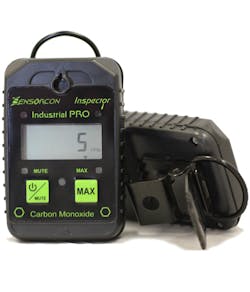Carbon monoxide (CO) poisoning is a year-round issue, but it often rears its ugly head during the heating season when furnaces and boilers are firing up for the first time in months. It's also due in part to the heightened awareness and reporting by the media.
Furnaces are typically condemned in fall, when tested for cracked heat exchangers. Without question, you should replace a cracked heat exchanger on the furnace. But in truth, more than 90% of CO releases are caused by combustion air and venting issues, not by cracked heat exchangers.
These situations can be prevented with proper testing, using proven protocols for evaluating and pinpointing the cause of the CO release. The key is to have the appropriate training and processes in place.
Your technicians need a thorough understanding of causes and solutions to prevent CO from becoming a life-threatening issue. Here are the right questions to ask yourself and your leadership team:
Do Techs Know How to Test and What to Look For?
What is the level of awareness of CO within your organization? Have you trained and equipped your field people with the knowledge and tools to know what causes CO and how to identify problems before they happen?
One word of advice: Do not use protocols that advocate a "Worst-Case Depressurization" approach to testing. This is dangerous for your technicians and the building occupants and doesn't provide a clear path to identifying the exact cause of the problem. A safe and effective protocol involves performing one action at a time until it triggers a problem, then identifying the cause, fixing it, and moving on to the next action.
Are your Field People Carrying Protection?
Technicians, installers, and salespeople are in hundreds of homes or buildings every year. Because of this sheer volume of exposure, they are the most likely to be exposed to CO.
First, it's your duty to keep your employees safe. Second, if your technicians aren't safe, how can they keep your customers safe? Every team member should carry a low-level CO monitor with them any time they enter a home or building.
They are, in fact, your first line of defense. There are two ways you can go. The first is to carry a personal safety device designed to be clipped onto a belt or pocket,The second approach is for technicians to take an installable Low-Level CO Monitor wherever they go. This is not a UL Listed CO detector or alarm sold in stores. Those products provide little or no protection and only alarm at 70 parts per million (ppm) after 3 hours, making them unfit as a personal protection device.
A good CO monitor should alert you at 15 PPM and instantly alarm at 70 PPM. The other benefit of carrying an installable Monitor is demonstrating the product's value to your customer, typically adding one to the service ticket or a new system quote. Just be sure to research which monitor to carry.
Do You Have a Testing and Reporting Process?
Besides solid testing protocols, it's essential to have a process for responding to your findings. This begins with detecting ambient CO and then what next steps to take. Your process should include communicating the situation to your customer and notifying the office of the situation.
If ambient CO is detected, you should have a process for removing any occupants from the environment and subsequently diagnosing the possible causes.
The next step is to test the combustion appliances with a quality analyzer. An independent draft gauge is another inexpensive yet vitally important diagnostic tool. All your techs should carry an analyzer and draft gauge – always.
Your process should include when to red-tag an appliance and yellow-tagging once you have made an appliance safe. Of course, there's much more detail to this entire process and training needed to do it properly.
There are organizations like National Comfort Institute that specialize in CO and Combustion training and certification. NCI has made available at no charge for the next 30 days for CB readers a special webinar entitled CO Safety tips. Just click on the following link and sign in to watch the full webinar: ncilink.com/CO-Safety.
Dominick Guarino is President & CEO of National Comfort Institute (NCI) (www.nationalcomfortinstitute.com), the nation's premier High-Performance training, certification, and membership organization focused on helping contractors grow and become more profitable. His e-mail is ncilink.com/ContactMe. For more info on Performance-Based Contracting™, go to WhyPBC.com or call NCI at 800/633-7058.
About the Author
Dominick Guarino
Chief Executive Officer
Dominick Guarino is CEO of National Comfort Institute (NCI), (www.nationalcomfortinstitute.com), the nation’s premier Performance-Based training,
certification, and membership organization, focused on helping contractors grow and become more profitable. His email is [email protected]. For more info on performance-based contracting, go to WhyPBC.com or call NCI at 800/633-7058.


